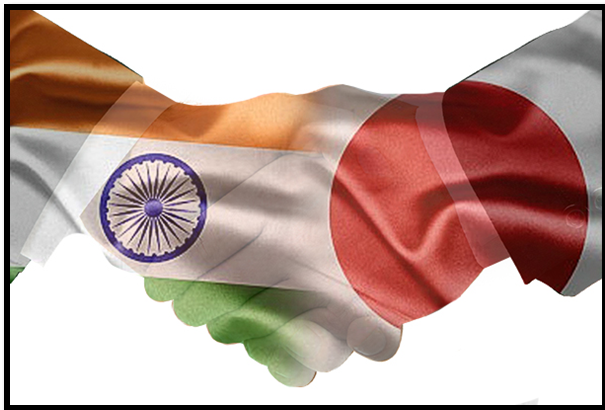INDIA-JAPAN CARBON CREDIT MECHANISM: A COLLABORATIVE INITIATIVE
Syllabus:
- GS-2- India-Japan relations , investment in the field of environmental protection , Different protocols
Focus:
- India is set to enter into a carbon trading and crediting mechanism with Japan through a Joint Crediting Mechanism (JCM). This collaboration aims to reduce emissions, enhance low-carbon technologies, and foster economic growth by sharing emission-reduction credits. The mechanism, guided by the Paris Agreement, will involve joint projects, a structured credit allocation process, and regulatory oversight by both governments.
Source - TH
Introduction
- India is on the verge of formalizing a carbon trading and crediting mechanism with Japan.
- This initiative, driven by a Memorandum of Cooperation (MoC), aims to establish a Joint Crediting Mechanism (JCM) that facilitates emission reduction projects and shares carbon credits between the two nations.
- This article delves into the details of this agreement, its operational framework, and its potential implications.
Key Aspects of the Joint Crediting Mechanism (JCM)
Purpose and Framework
- Objective: The JCM aims to reduce greenhouse gas emissions by promoting low-carbon technologies and practices.
- It is a bilateral agreement intended to complement the efforts of both countries in meeting their Nationally Determined Contributions (NDCs) under the Paris Agreement.
- Cabinet Approval: A draft Cabinet Note has been prepared and reviewed, authorizing the Ministry of Environment, Forest and Climate Change (MoEFCC) to sign the MoC with Japan.
- Article 6.2 Compliance: The mechanism will operate under Article 6.2 of the Paris Agreement, which allows for voluntary cooperation in the implementation of NDCs.
Operational Mechanism
- Project Approval: Projects under the JCM will be approved by a Joint Committee, which will develop and enforce guidelines covering project cycles, methodologies, and monitoring.
- Credit Allocation: Emission reduction credits will be allocated through a structured process and tracked via a registry system.
- Double Counting Prevention: The mechanism ensures that credits are not double-counted, with clear rules on the allocation of credits towards each country’s NDCs.
Economic and Environmental Benefits
Job Creation and Investments
- Low-Carbon Technologies: The proposal is expected to boost job creation by attracting investments in low-carbon and clean technologies.
- Technology Transfer: Japan will facilitate the transfer of technology, finance, and capacity building to support the implementation of the JCM.
Emission Reductions
- Shared Credits: Emission reductions achieved through JCM projects will contribute to the NDCs of both India and Japan.
- Infrastructure Development: The mechanism will support the diffusion of leading decarbonizing technologies, equipment, machinery, and infrastructure.
Regulatory and Administrative Details
Joint Committee
- Composition and Responsibilities: A joint committee will be established to oversee the JCM.
- This committee will be responsible for developing rules and guidelines, approving projects, and managing credit allocations.
- Decision-Making: Decisions related to the registration of projects, crediting periods, and issuance of credits will be made with prior confirmation from both governments.
Legal and Regulatory Framework
- Domestic Laws: The JCM will be implemented in accordance with the relevant domestic laws and regulations of both India and Japan.
- Credit Issuance: Both governments will notify and authorize the issuance of credits based on the submitted reports from approved projects.
Challenges and Considerations
Ensuring Transparency
- Registry System: A robust registry system will be essential to track and manage carbon credits effectively, ensuring transparency and accountability.
- Third-Party Verification: The involvement of third-party entities for monitoring and verification will help maintain the integrity of the JCM.
| Different carbon trading mechanisms–
1. Cap-and-Trade Systems- A cap-and-trade system sets a limit (cap) on the total amount of GHG emissions allowed in a particular region or sector. Companies receive or buy emissions allowances that total the cap. If they emit less than their allowances, they can sell the excess to others. 2. Joint Implementation (JI)- A mechanism under the Kyoto Protocol allowing developed countries to earn emission reduction units from projects that reduce emissions in other developed countries. 3. Clean Development Mechanism (CDM)-Also under the Kyoto Protocol, the CDM allows developed countries to invest in emission reduction projects in developing countries, earning certified emission reduction (CER) credits. Examples:Renewable Energy Projects: Solar, wind, and hydro projects in countries like India and Brazil that generate CERs |
Addressing Economic Disparities
- Equitable Credit Distribution: The mechanism must ensure that the benefits of emission reductions and technology transfers are equitably distributed between both countries.
- Local Impact: The impact of JCM projects on local communities and economies will need careful consideration to maximize positive outcomes.
Potential Implications for Global Climate Initiatives
- Model for Collaboration: The India-Japan JCM could serve as a model for other countries looking to establish similar mechanisms under the Paris Agreement.
- Scaling Impact: Successful implementation could pave the way for scaling up such initiatives, amplifying global efforts to mitigate climate change.
- Enhanced NDCs: By sharing best practices and technologies, both countries could enhance their respective NDCs, contributing more effectively to global emission reduction targets
Conclusion
- The proposed Joint Crediting Mechanism between India and Japan represents a significant step towards collaborative efforts in combating climate change.
- By fostering the exchange of low-carbon technologies and practices, this initiative not only aims to reduce emissions but also to drive economic growth and job creation.
- As the two countries prepare to formalize this agreement, the success of the JCM will depend on its transparent implementation and equitable distribution of benefits.
Source:The Hindu
Associated article
https://universalinstitutions.com/a-fab-way-to-conduct-india-japan-tech-diplomacy/




